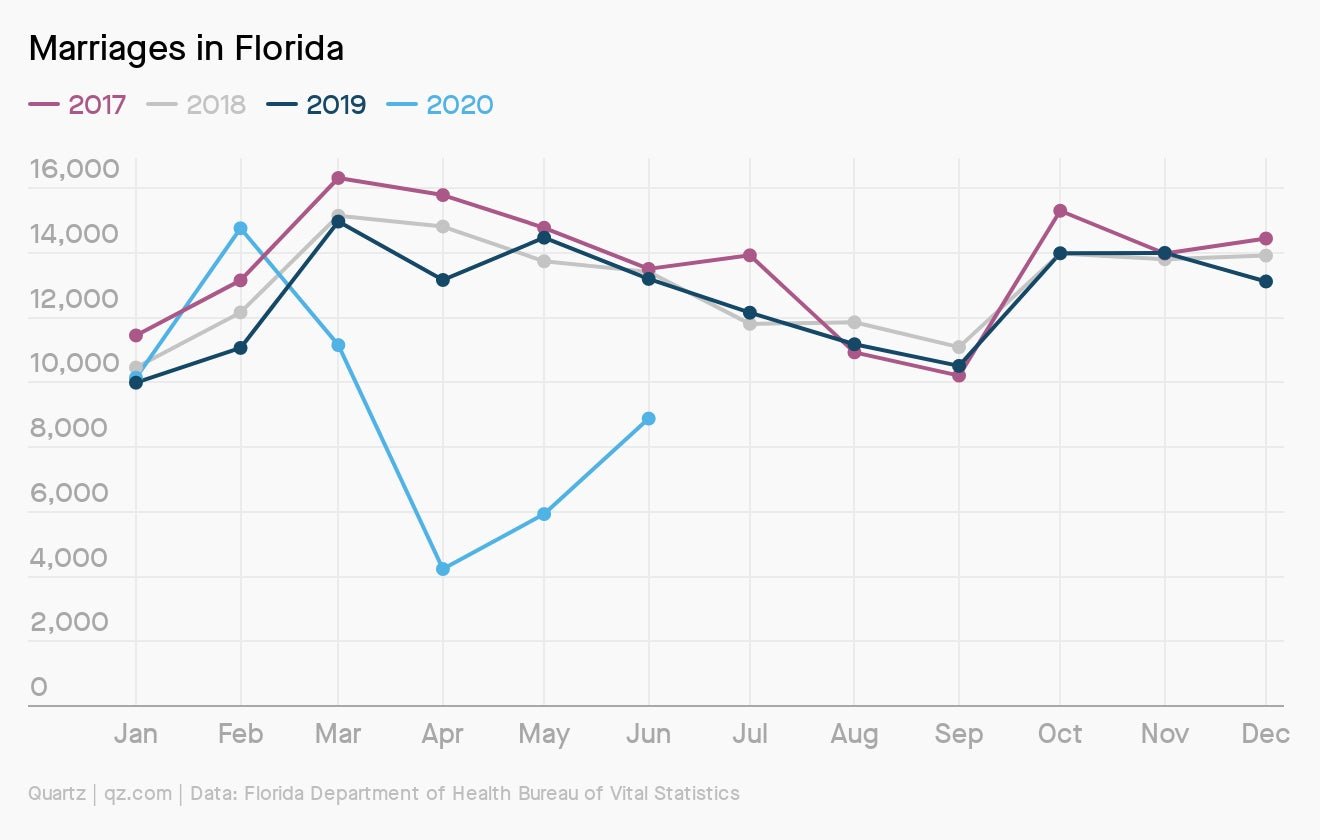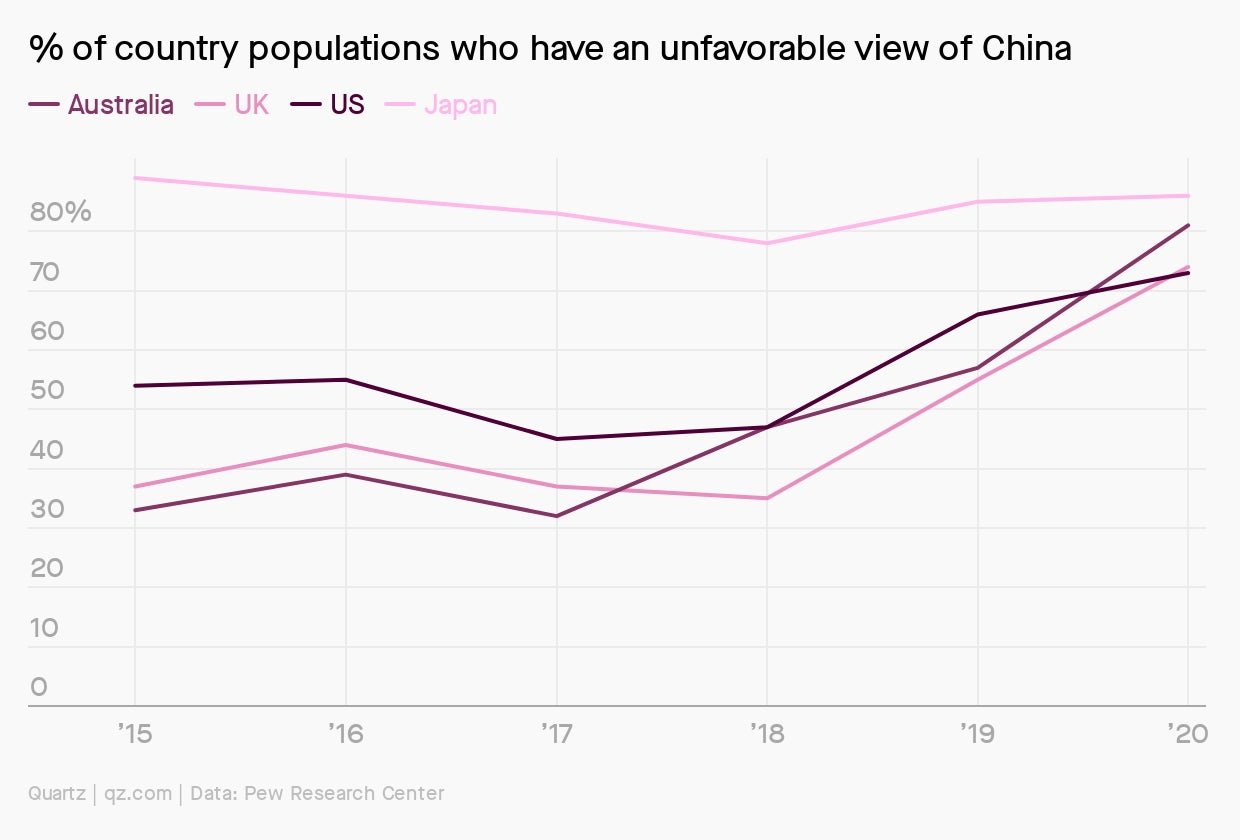Coronavirus: Patient in chief
Hello Quartz readers,

Hello Quartz readers,
Covid-19 didn’t get elected to the White House—it just moved in and started making the rounds. Last week, US president Donald Trump joined the growing ranks of world leaders who have had Covid-19, checking into the hospital on Friday.
Like the virus itself, the market’s reaction doesn’t recognize borders. In the wake of Trump’s announcement, stock markets from Tokyo to Sydney fell precipitously. They’ve since rebounded, after a weekend full of treatment updates and POTUS’s return to the White House on Monday.
Though Trump feels confident about the kitchen sink of drugs he received, there’s no guarantee that the VIP treatment will do the trick. What’s more certain: If other leaders are any indication, dealing with coronavirus up close and personal won’t change much about the White House’s approach to the pandemic.
Okay, let’s get started.
Startups are doing fine
While the coronavirus pandemic has ravaged much of the world’s economy—forcing mass layoffs, government bailouts, and a wave of bankruptcies and business closures—most venture capital-backed startups have skated by unscathed.
To put a precise number on it, 52% of startups have been positively impacted by the pandemic or seen no impact to speak of, according to a working paper from researchers at Harvard, Stanford, the University of Chicago, and the University of British Columbia. The academics surveyed nearly 1,000 venture capitalists—572 in the US and 381 elsewhere—and asked them to rate the health of the startups in their investment portfolios.
Bill Trenchard, a partner at First Round Capital, a venture capital firm in San Francisco, said pandemic disruptions have played right into many of his portfolio companies’ business plans. “Every digital trend we saw developing, whether it was online multiplayer gaming or distributed work or ecommerce, it has all just accelerated,” he said. “Pretty much anyone with a venture backed startup is developing along those trends, and that’s why it’s really been good for them.” Read about the companies that are more than just getting by.
The big short
It seems like ages ago that the Nintendo Switch was the hot pandemic product—and ages since we’ve visited our Animal Crossing islands (sorry, Tom Nook). As factories shut down to prevent coronavirus outbreaks, certain specialty items—especially electronics, largely manufactured in China—ran into shortages. But as factories come back on line, the latest items on backorder are more likely a result of newborn pandemic needs.
Here are some of the things we can’t get our hands on:
- Patio heaters are backordered as restaurants try to extend their outdoor dining season and residents find ways to socialize at a distance in their backyards. The domed propane heaters most used by eateries are likely to be scarce through the end of 2020.
- Sewage testing for Covid-19 is an expanding strategy to keep track of outbreaks. But it’s putting a strain on the supply of autosamplers, the machines that collect tiny amounts of sewer water from a manhole. Demand at one supplier is up by 50% over last year.
- Dishwashers are the new necessity, including in India, where homeowners are turning to gadgets to replace the work of domestic help. But the industry is just a hundredth of the size of that for refrigerators, and companies are racing to meet the new demand.
But don’t assume every shortage is just because of the pandemic. When we look at all the data swirling around these days, it can be tempting to point out trends that may not be trends after all…
The reason is the season

It hasn’t even been a year since the first case of Covid-19 was confirmed. For data analysis, this means it is essential we watch out for seasonal fluctuations. Did US computer sales shoot up in the second quarter of 2020 because of Covid-19? Or was it simply because computer sales always rise this time of year?
Accounting for seasonality is one of the easiest ways to spot an erroneous trend, and we can help you develop a good weather eye.
Not a member? Become one today, and let the rest of our data deluge field guide show you how to filter the numbers:
- The best coronavirus data resources on the Internet
- The challenge of percent change
- The history of the pivot table
- The great power of indexing data
A nation’s reputation
For all its efforts to shape its narrative and project a positive global image, China is viewed more negatively by countries around the world than ever before.
A new study by the Pew Research Center shows that unfavorable views of China have reached historic highs across many countries, with a steep rise in negative perceptions this year against the backdrop of the Covid-19 pandemic, Beijing’s heavy-handed crackdown on Hong Kong, and growing awareness of the government’s repression of Uyghurs in Xinjiang.

Australia recorded the steepest rise in negative perceptions of China. There, tensions have soared as Beijing slapped tariffs on Australian barley, restricted beef exports, and launched a dumping probe into Australian wine. All this came after Canberra pushed for an international investigation into the origins of the coronavirus pandemic.
The UK also saw big jumps in unfavorable views of China. There’s one country where the Covid-19 pandemic hasn’t caused a major spike in negative sentiment towards China, however: Japan.
But that’s only because Japan has long harbored an intense dislike of its neighbor thanks to a centuries-long history of war and tension between the two. Nevertheless, Japan’s economy is also closely entwined with China’s, which means it has a balancing act to play as it hosts the four-nation Quad meeting of foreign ministers from the US, Australia, and India, who hope to use the forum to craft a united front against China.
You asked

How do I know if my indoor spaces are well enough ventilated to thwart the spread of Covid-19?
There is a growing consensus that one of the primary ways the novel coronavirus spreads is through the air. That makes it risky to put a lot of people in a poorly ventilated space. As schools, offices, and businesses reopen, facilities managers are looking at one particular metric to gauge whether there’s an elevated risk of coronavirus transmission: air changes per hour (ACH).
Air ducts aren’t just there to provide a network of escape routes for cinematic thieves. Breaking down how an ACH works and benchmarks to be aware of when optimizing for ventilation, Alex Ossola explains how to go with the flow.
Essential reading
- The latest 🌏 figures: 35.6 million confirmed cases; 24.8 million classified as “recovered.”
- Pull over right now: Americans still aren’t driving to work
- Better late than never: Covid-19 exposure notification apps are coming to US states
- Covid commodity: Why you should buy a printer immediately
- Watch your cells: An Excel spreadsheet error erased 16,000 coronavirus cases
Our best wishes for a healthy day. Get in touch with us at [email protected], and live your best Quartz life by downloading our iOS app and becoming a member. Today’s newsletter was brought to you by Mary Hui, Nico Rivero, Alex Ossola, Katherine Foley, Niharika Sharma, Susan Howson, Katie Palmer, and Kira Bindrim.